Preparation and Assessment of Heat-Treated ?-Chitin Nanowhiskers Reinforced Poly(viny alcohol) Film for Packaging Application
Abstract
:1. Introduction
2. Materials and Methods
2.1. Preparation of α-Chitin Nanowhiskers (ChWs) Suspension
2.2. Fabrication of PVA/ChWs Composite Film
3. Characterization
3.1. Fourier Transform Infrared Spectroscopy (FTIR)
3.2. X-ray Diffraction (XRD)
3.3. Thermal Gravimetric Analysis (TGA)
3.4. Mechanical Properties
3.5. Light Transmittance
3.6. The Oxygen Transmission Rate (OTR)
3.7. The Water-Resistance Pressure (mm) Tests
4. Results
4.1. Fourier Transform Infrared Spectroscopy (FT-IR)
4.2. X-ray Diffraction (XRD)
4.3. Thermal Stability
4.4. Tensile Properties
4.5. Regular Light Transmittance
4.6. Water Resistance and Barrier Properties
5. Conclusions
Author Contributions
Funding
Acknowledgements
Conflicts of Interest
References
- Yang, W.; Owczarek, J.S.; Fortunati, E.; Kozanecki, M.; Mazzaglia, A.; Balestra, G.M.; Kenny, J.M.; Torre, L.; Puglia, D. Antioxidant and antibacterial lignin nanoparticles in polyvinyl alcohol/chitosan films for active packaging. Ind. Crops Prod. 2016, 94, 800–811. [Google Scholar] [CrossRef]
- Suh, J.; Shin, J.; Kim, H.; Kim, H.; Kim, Y.; Kang, H.-J. Effect of Poly(vinyl alcohol) Adhesives on the Dimensional Stability of LCD Polarizer. Polym. Korea 2010, 34, 560–564. [Google Scholar] [CrossRef]
- Lim, M.; Kwon, H.; Kim, D.; Seo, J.; Han, H.; Khan, S.B. Highly-enhanced water resistant and oxygen barrier properties of cross-linked poly(vinyl alcohol) hybrid films for packaging applications. Prog. Org. Coat. 2015, 85, 68–75. [Google Scholar] [CrossRef]
- Fan, J.-B.; Song, Y.; Wang, S.; Meng, J.; Yang, G.; Guo, X.; Feng, L.; Jiang, L. Directly Coating Hydrogel on Filter Paper for Effective Oil-Water Separation in Highly Acidic, Alkaline, and Salty Environment. Adv. Funct. Mater. 2015, 25, 5368–5375. [Google Scholar] [CrossRef]
- Jaiturong, P.; Sirithunyalug, B.; Eitsayeam, S.; Asawahame, C.; Tipduangta, P.; Sirithunyalug, J. Preparation of glutinous rice starch/polyvinyl alcohol copolymer electrospun fibers for using as a drug delivery carrier. Asian J. Pharm. Sci. 2018, 13, 239–247. [Google Scholar] [CrossRef]
- Ham, M.; Kim, J.-C.; Chang, J.-H. Characterization of Poly(vinyl alcohol) Nanocomposite Films with Various Clays. Polym. Korea 2013, 37, 225–231. [Google Scholar] [CrossRef] [Green Version]
- Surudžić, R.; Janković, A.; Bibić, N.; Vukašinović-Sekulić, M.; Perić-Grujić, A.; Mišković-Stanković, V.; Park, S.J.; Rhee, K.Y. Physico–chemical and mechanical properties and antibacterial activity of silver/poly(vinyl alcohol)/graphene nanocomposites obtained by electrochemical method. Compos. Part B Eng. 2016, 85, 102–112. [Google Scholar] [CrossRef]
- Wang, X.; Liu, X.; Yuan, H.; Liu, H.; Liu, C.; Li, T.; Yan, C.; Yan, X.; Shen, C.; Guo, Z. Non-covalently functionalized graphene strengthened poly(vinyl alcohol). Mater. Des. 2018, 139, 372–379. [Google Scholar] [CrossRef]
- Miao, J.; Zhang, R.; Bai, R. Poly (vinyl alcohol)/carboxymethyl cellulose sodium blend composite nanofiltration membranes developed via interfacial polymerization. J. Membr. Sci. 2015, 493, 654–663. [Google Scholar] [CrossRef]
- Rudra, R.; Kumar, V.; Kundu, P.P. Acid catalysed cross-linking of poly vinyl alcohol (PVA) by glutaraldehyde: Effect of crosslink density on the characteristics of PVA membranes used in single chambered microbial fuel cells. RSC Adv. 2015, 5, 83436–83447. [Google Scholar] [CrossRef]
- Zhang, Y.; Zhu, P.C.; Edgren, D. Crosslinking reaction of poly(vinyl alcohol) with glyoxal. J. Polym. Res. 2009, 17, 725–730. [Google Scholar] [CrossRef]
- Miyazaki, T.; Takeda, Y.; Akane, S.; Itou, T.; Hoshiko, A.; En, K. Role of boric acid for a poly (vinyl alcohol) film as a cross-linking agent: Melting behaviors of the films with boric acid. Polymer 2010, 51, 5539–5549. [Google Scholar] [CrossRef]
- Gohil, J.M.; Bhattacharya, A.; Ray, P. Studies on The Crosslinking of Poly (Vinyl Alcohol). J. Polym. Res. 2005, 13, 161–169. [Google Scholar] [CrossRef]
- Khan, M.; Bhattacharia, S.; Kader, M.; Bahari, K. Preparation and characterization of ultra violet (UV) radiation cured bio-degradable films of sago starch/PVA blend. Carbohydr. Polym. 2006, 63, 500–506. [Google Scholar] [CrossRef]
- Zhu, L.; Liang, K.; Ji, Y.L. Prominent reinforcing effect of chitin nanocrystals on electrospun polydioxanone nanocomposite fiber mats. J. Mech. Behav. Biomed. Mater. 2015, 44, 35–42. [Google Scholar] [CrossRef] [PubMed]
- Zeng, J.B.; He, Y.S.; Li, S.L.; Wang, Y.Z. Chitin Whiskers: An Overview. Biomacromolecules 2012, 13, 1–11. [Google Scholar] [CrossRef] [PubMed]
- Sriupayo, J.; Supaphol, P.; Blackwell, J.; Rujiravanit, R. Preparation and characterization of alpha-chitin whisker-reinforced poly(vinyl alcohol) nanocomposite films with or without heat treatment. Polymer 2005, 46, 5637–5644. [Google Scholar] [CrossRef]
- Deng, Q.; Li, J.; Yang, J.; Li, D. Optical and flexible alpha-chitin nanofibers reinforced poly(vinyl alcohol) (PVA) composite film: Fabrication and property. Compos. Part A Appl. Sci. Manuf. 2014, 67, 55–60. [Google Scholar] [CrossRef]
- Kadokawa, J.; Takegawa, A.; Mine, S.; Prasad, K. Preparation of chitin nanowhiskers using an ionic liquid and their composite materials with poly(vinyl alcohol). Carbohydr. Polym. 2011, 84, 1408–1412. [Google Scholar] [CrossRef]
- Xu, J.; Liu, S.; Chen, G.; Chen, T.; Song, T.; Wu, J.; Shi, C.; He, M.; Tian, J. Engineering Biocompatible Hydrogels from Bicomponent Natural Nanofibers for Anticancer Drug Delivery. J. Agric. Food Chem. 2018, 66, 935–942. [Google Scholar] [CrossRef] [PubMed]
- Zhu, G.; Wang, F.; Dong, S.; Xu, K.; Liu, Y. Thermal, Mechanical and Chemical Properties of Hydrophilic Poly(vinyl alcohol) Film Improved by Hydrophobic Poly(propylene glycol). Polym. Plast. Technol. Eng. 2013, 52, 422–426. [Google Scholar] [CrossRef]
- Goodrich, J.D.; Winter, W.T. α-Chitin nanocrystals prepared from shrimp shells and their specific surface area measurement. Biomacromolecules 2007, 8, 252–257. [Google Scholar] [CrossRef] [PubMed]
- Lee, S.-Y.; Mohan, D.J.; Kang, I.-A.; Doh, G.-H.; Lee, S.; Han, S.O. Nanocellulose reinforced PVA composite films: Effects of acid treatment and filler loading. Fibers Polym. 2009, 10, 77–82. [Google Scholar] [CrossRef]
- Wang, Y.; Chang, C.; Zhang, L. Effects of Freezing/Thawing Cycles and Cellulose Nanowhiskers on Structure and Properties of Biocompatible Starch/PVA Sponges. Macromol. Mater. Eng. 2009, 295, 137–145. [Google Scholar] [CrossRef]
- Siracusa, V.; Rocculi, P.; Romani, S.; Rosa, M.D. Biodegradable polymers for food packaging: A review. Trends Food Sci. Technol. 2008, 19, 634–643. [Google Scholar] [CrossRef]
- Rahman, W.A.W.A.; Sin, L.T.; Rahmat, A.R.; Samad, A.A. Thermal behaviour and interactions of cassava starch filled with glycerol plasticized polyvinyl alcohol blends. Carbohydr. Polym. 2010, 81, 805–810. [Google Scholar] [CrossRef]
- Kim, D.; Jang, M.; Seo, J.; Nam, K.-H.; Han, H.; Khan, S.B. UV-cured poly(urethane acrylate) composite films containing surface-modified tetrapod ZnO whiskers. Compos. Sci. Technol. 2013, 75, 84–92. [Google Scholar] [CrossRef]
- Cano, A.; Fortunati, E.; Cháfer, M.; Kenny, J.M.; Chiralt, A.; González-Martínez, C. Properties and ageing behaviour of pea starch films as affected by blend with poly(vinyl alcohol). Food Hydrocoll. 2015, 48, 84–93. [Google Scholar] [CrossRef] [Green Version]
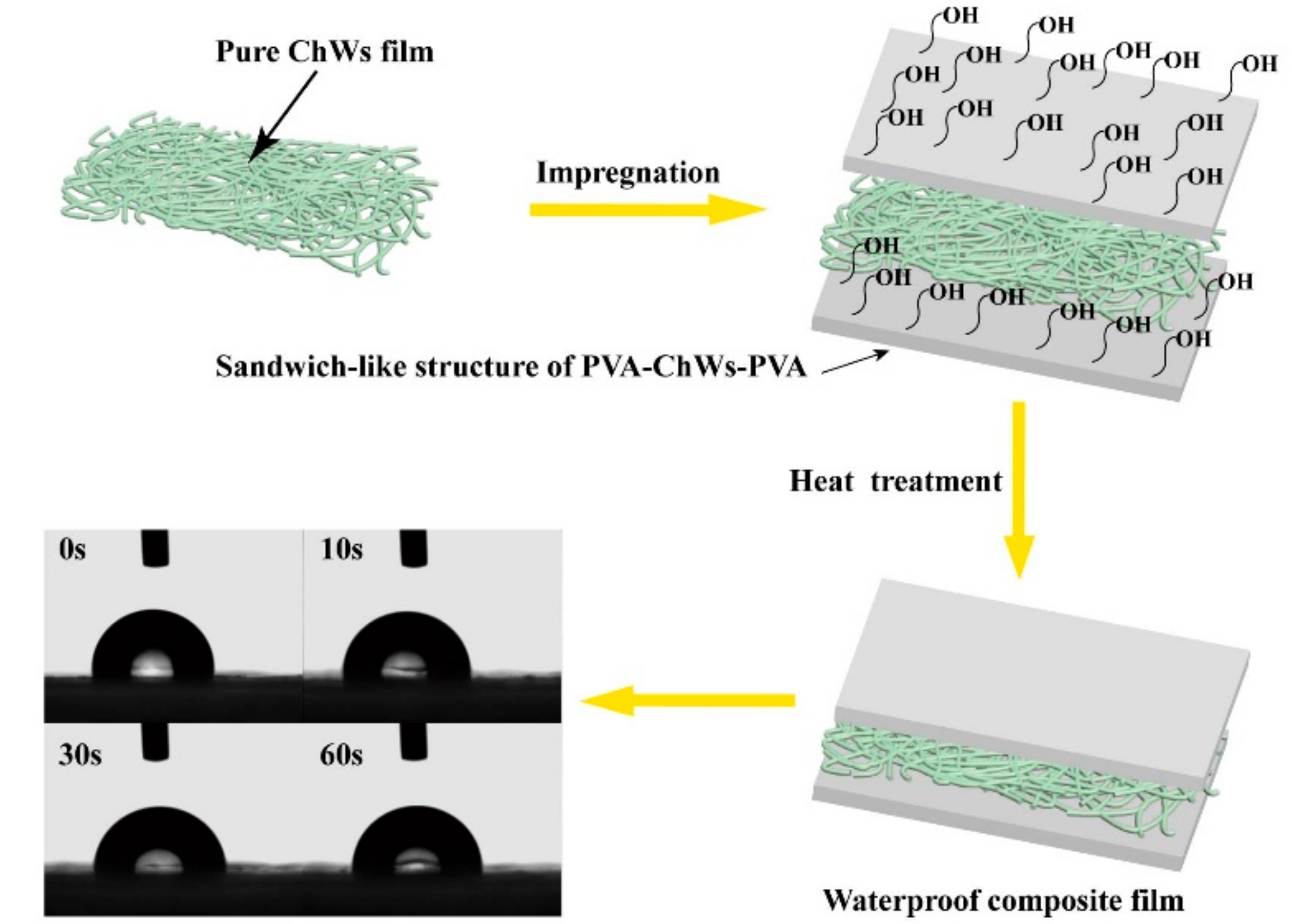
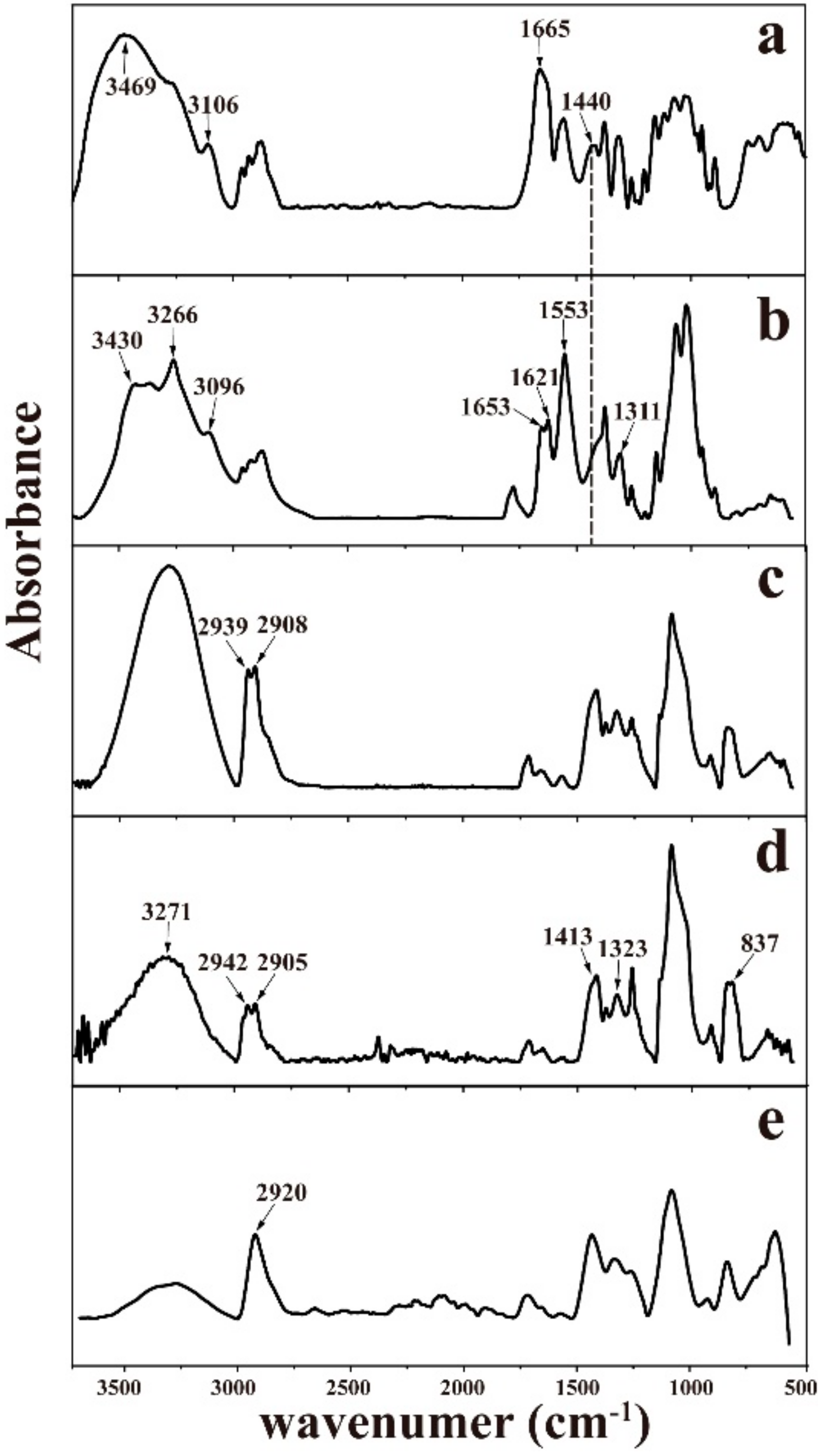
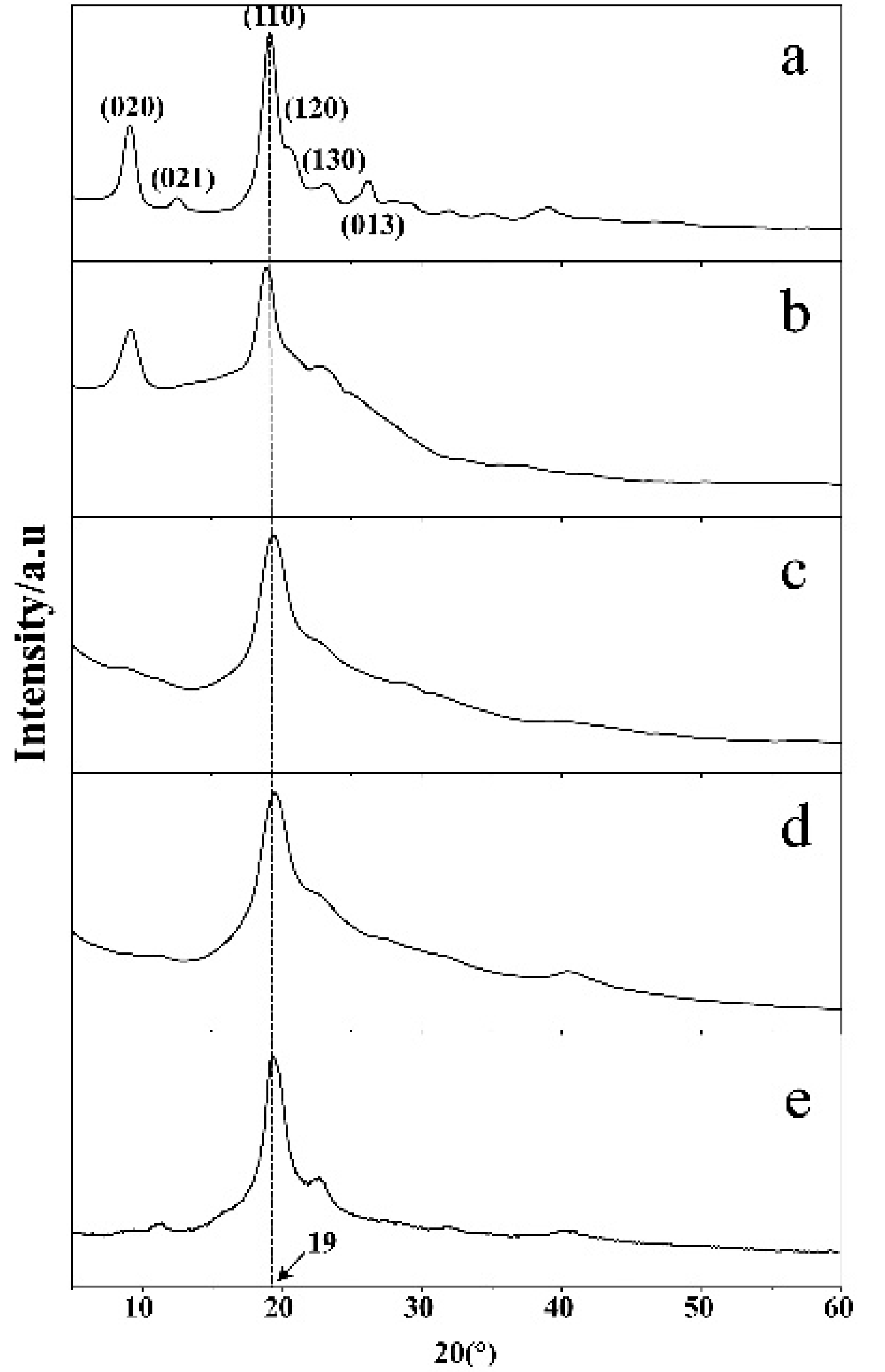
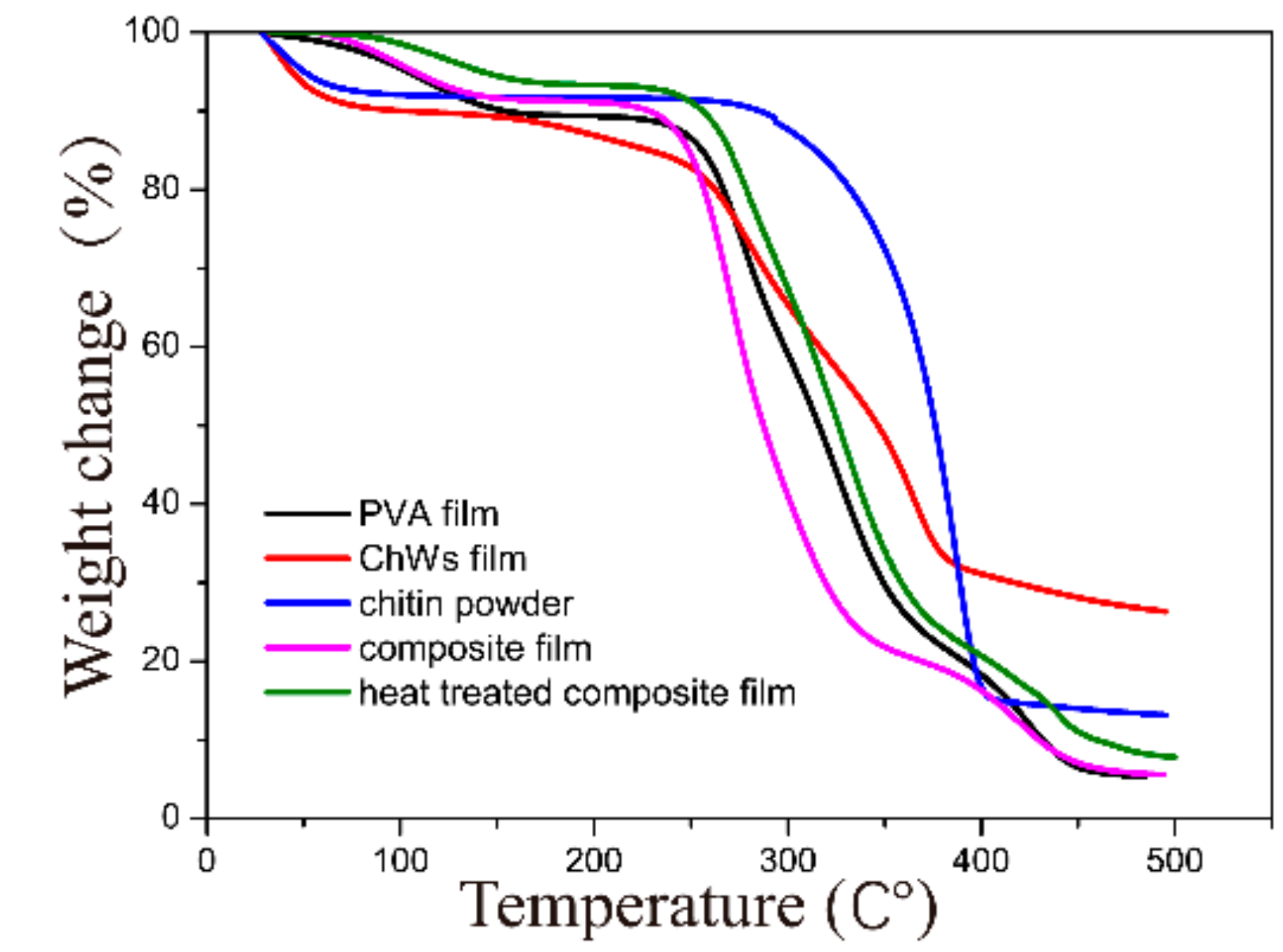

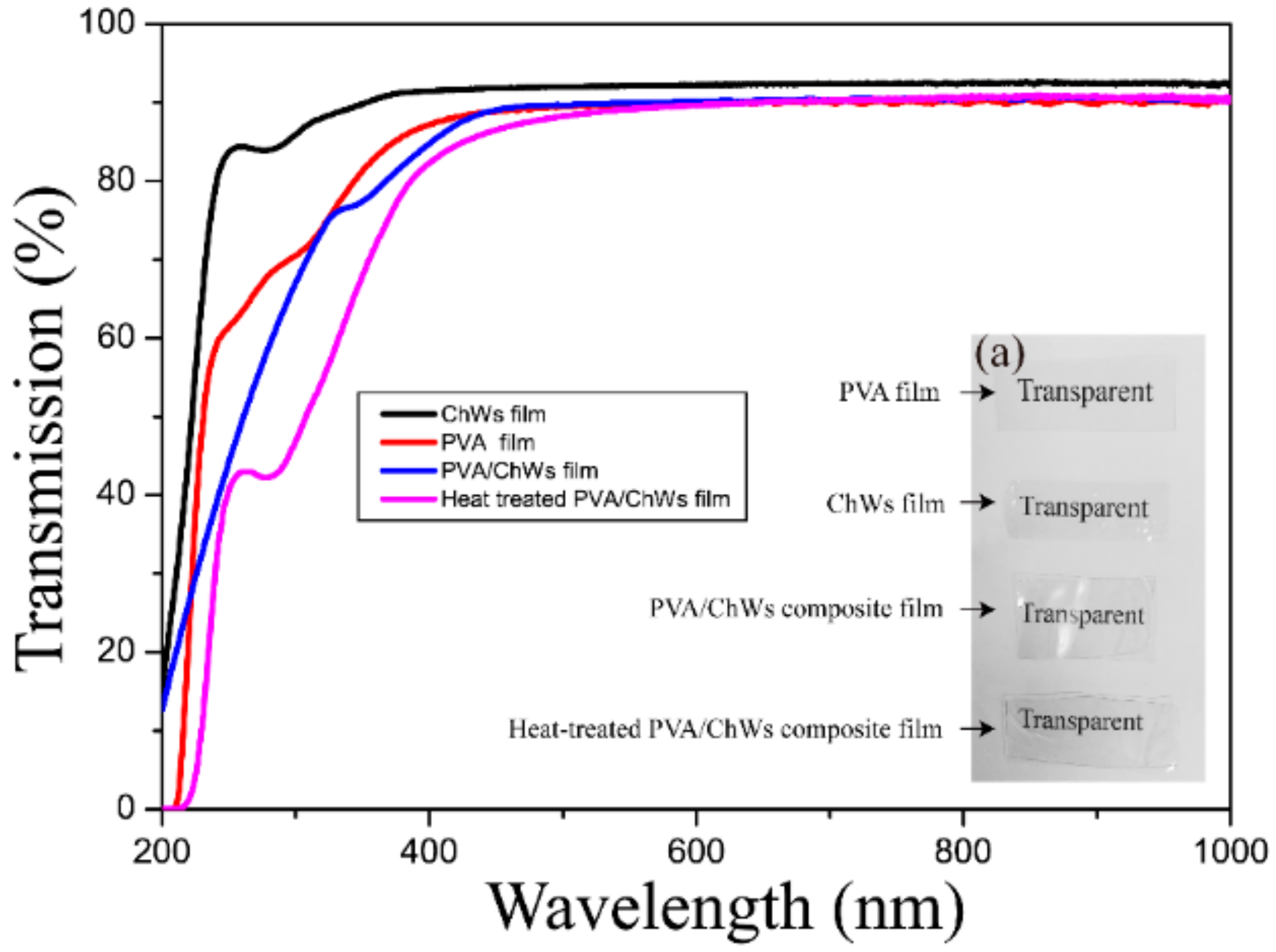

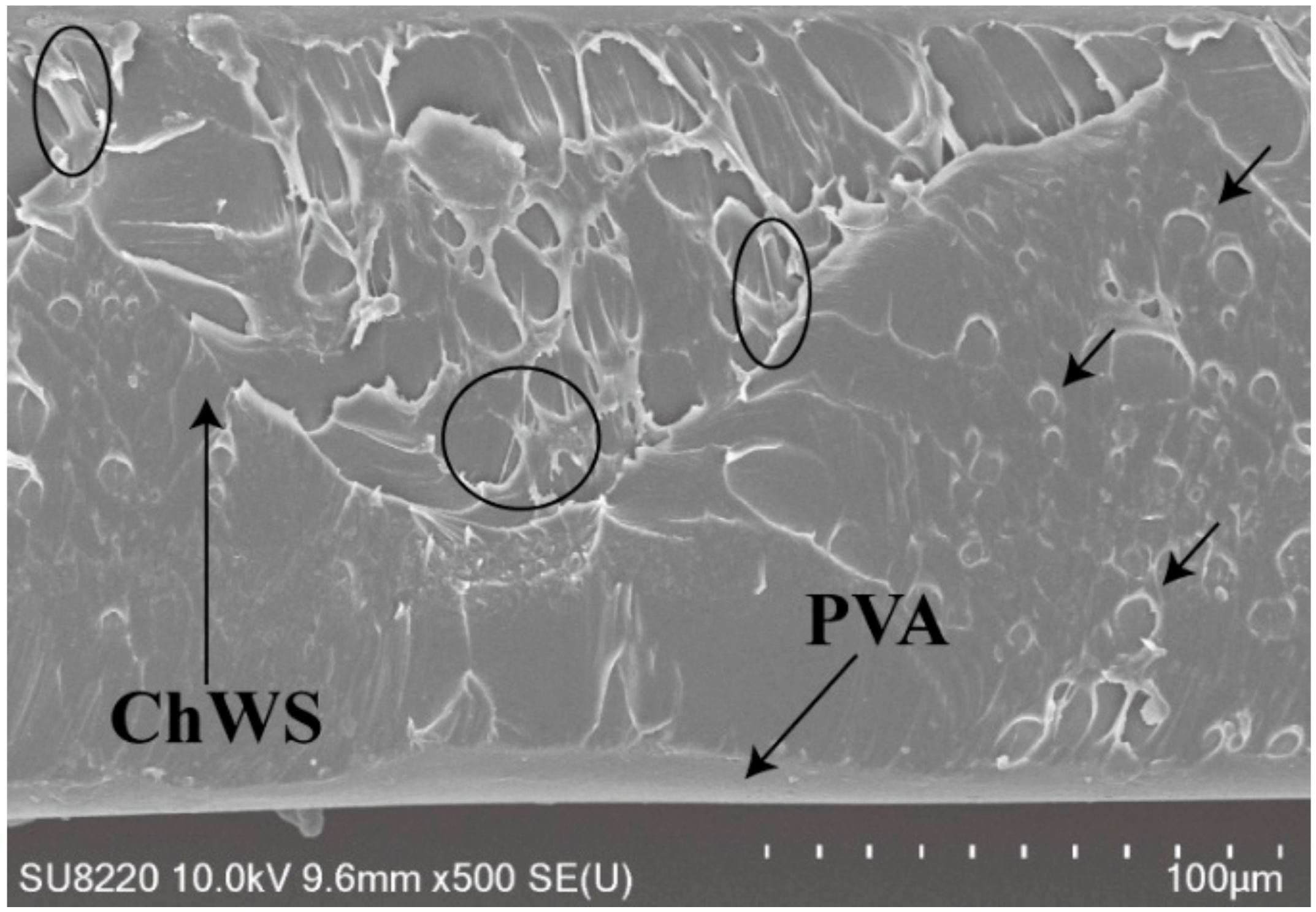
© 2018 by the authors. Licensee MDPI, Basel, Switzerland. This article is an open access article distributed under the terms and conditions of the Creative Commons Attribution (CC BY) license (http://creativecommons.org/licenses/by/4.0/).
Share and Cite
Peng, C.; Chen, G. Preparation and Assessment of Heat-Treated ?-Chitin Nanowhiskers Reinforced Poly(viny alcohol) Film for Packaging Application. Materials 2018, 11, 1883. https://doi.org/10.3390/ma11101883
Peng C, Chen G. Preparation and Assessment of Heat-Treated ?-Chitin Nanowhiskers Reinforced Poly(viny alcohol) Film for Packaging Application. Materials. 2018; 11(10):1883. https://doi.org/10.3390/ma11101883
Chicago/Turabian StylePeng, Chao, and Guangxue Chen. 2018. "Preparation and Assessment of Heat-Treated ?-Chitin Nanowhiskers Reinforced Poly(viny alcohol) Film for Packaging Application" Materials 11, no. 10: 1883. https://doi.org/10.3390/ma11101883
APA StylePeng, C., & Chen, G. (2018). Preparation and Assessment of Heat-Treated ?-Chitin Nanowhiskers Reinforced Poly(viny alcohol) Film for Packaging Application. Materials, 11(10), 1883. https://doi.org/10.3390/ma11101883




